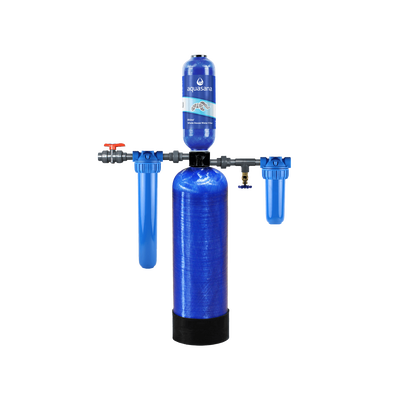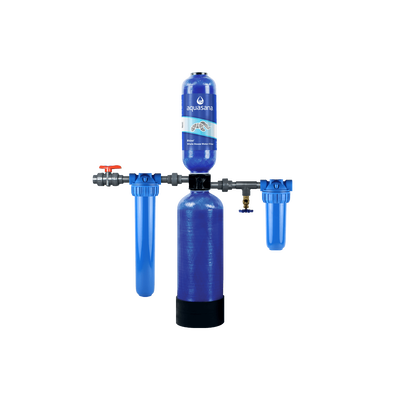Laws designed to protect your flow rate
Luckily, there are laws in place to make sure your appliances don’t exceed a reasonable GPM.
Since 1992, a maximum of 2.5 GPM is the EPA-mandated flow rate for new showerheads. This means that no more than 2.5 gallons of water should be flowing out of your shower head at any given minute.
Additionally, manufacturers have decreased the flow rate for showerheads over time. If your current shower head was made in the 1980s or 1990s, your flow rate could be 3.5 GPM or more.
WHOLE HOUSE WATER FILTER
Rhino® Max Flow
Maximum-flow whole house water filtration system reduces 97% of chlorine at 2X the flow rate. Lasts 1,000,000 gallons or 10 years.
.png)
How does flow rate affect water filtration
If the incoming water pressure is too high, you’ll need a flow restrictor installed on your water filter to slow water down before it passes through your water filter.
When you start your researching process, look for a water filter that can handle at least 3 GPM, and then consider your water quality, contaminants you’re looking to eliminate, and your budget. Do you want to filter from just your kitchen faucet? Or do you want to filter across your whole home?
Do you want to filter out chlorine/chloramines, or do you also want to tackle fluoride and mercury? Do you want your bath to be free from contaminants or just your kitchen faucet?
Look for the NSF, WQA or IAPMO Certification
NSF, WQA, and NSF are all independent testing organizations that test and certify products to specific national or international standards. Those standards are most often set by NSF. If a filtration or softening system is IAPMO certified to NSF/ANSI Standard 44, for example, this means that the performance of the system is confirmed to testing standards in a lab. Certifications have to meet an efficiency rate of 85 percent or greater in order to pass and receive certification status, and they are a surefire way to make sure that the product you’re investing in will help give you access to clean, healthy water, regardless of environmental factors or household size.
Many whole house filtration systems have been NSF/ANSI tested and certified to make sure that peak times or not, your household will have access to filtered water. For example, our Rhino Max Flow is certified for contaminant reduction up to a flow rate of 14GPM. Because at the end of the day, getting access to clean, filtered water shouldn’t mean sacrificing a warm bath.
.jpg)


